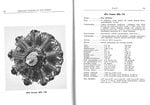Burmese Bandit
Senior Airman
- 474
- Dec 5, 2008
While researching engines which might have been used by the Axis to design a better fighter and/or bomber in WWII my attention was caught by this Italian engine, which, according to the Wiki (not that I trust it 100%, but it's much more often right than wrong!) says -
"...At the time of its first running in 1938 and 1939 it was the most powerful radial engine in the world, generating just less than 1492 kW (2000 hp) on 100-octane fuel."
Although the 135 in question is then described as having "...Power output:1177 kW (1600 hp) at Take Off, 1030 kW (1400 CV) at 3200m..." Wiki goes on to say that a variant, the Alfa Romeo 136 R.C.25, had a power output of
"...Power output:1765 kW (2400 hp) at 0m, 1360 kW (1850 CV) at 2500m..."
TWO THOUSAND FOUR HUNDRED HORSEPOWER AT SEA LEVEL????
If that was true, and it was produced in the very early years of the war, why wasn't it used as the primary engine for thw Wurger - especially the ground attack version???
Did this engine have reliability problems, or production problems, or was it just a case of German Technical Jealousy???
I have searched this forum and the net, but i have not been able to come up with the answers to those questions.
Which is why I am asking the very knowledgeable members of these forums - could someone enlighten me on the history and fate of this (on paper at least) world-beating engine of its time?
"...At the time of its first running in 1938 and 1939 it was the most powerful radial engine in the world, generating just less than 1492 kW (2000 hp) on 100-octane fuel."
Although the 135 in question is then described as having "...Power output:1177 kW (1600 hp) at Take Off, 1030 kW (1400 CV) at 3200m..." Wiki goes on to say that a variant, the Alfa Romeo 136 R.C.25, had a power output of
"...Power output:1765 kW (2400 hp) at 0m, 1360 kW (1850 CV) at 2500m..."
TWO THOUSAND FOUR HUNDRED HORSEPOWER AT SEA LEVEL????
If that was true, and it was produced in the very early years of the war, why wasn't it used as the primary engine for thw Wurger - especially the ground attack version???
Did this engine have reliability problems, or production problems, or was it just a case of German Technical Jealousy???
I have searched this forum and the net, but i have not been able to come up with the answers to those questions.
Which is why I am asking the very knowledgeable members of these forums - could someone enlighten me on the history and fate of this (on paper at least) world-beating engine of its time?

